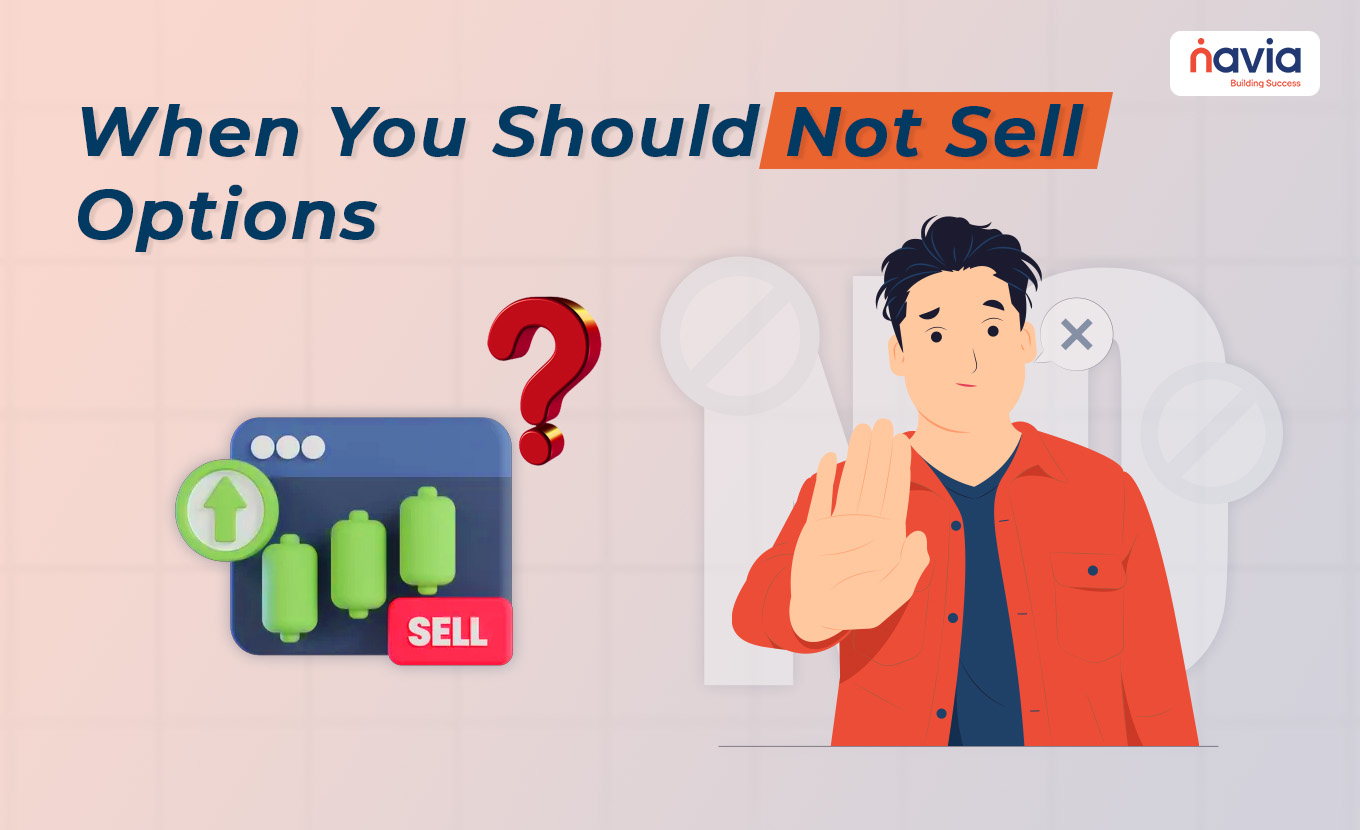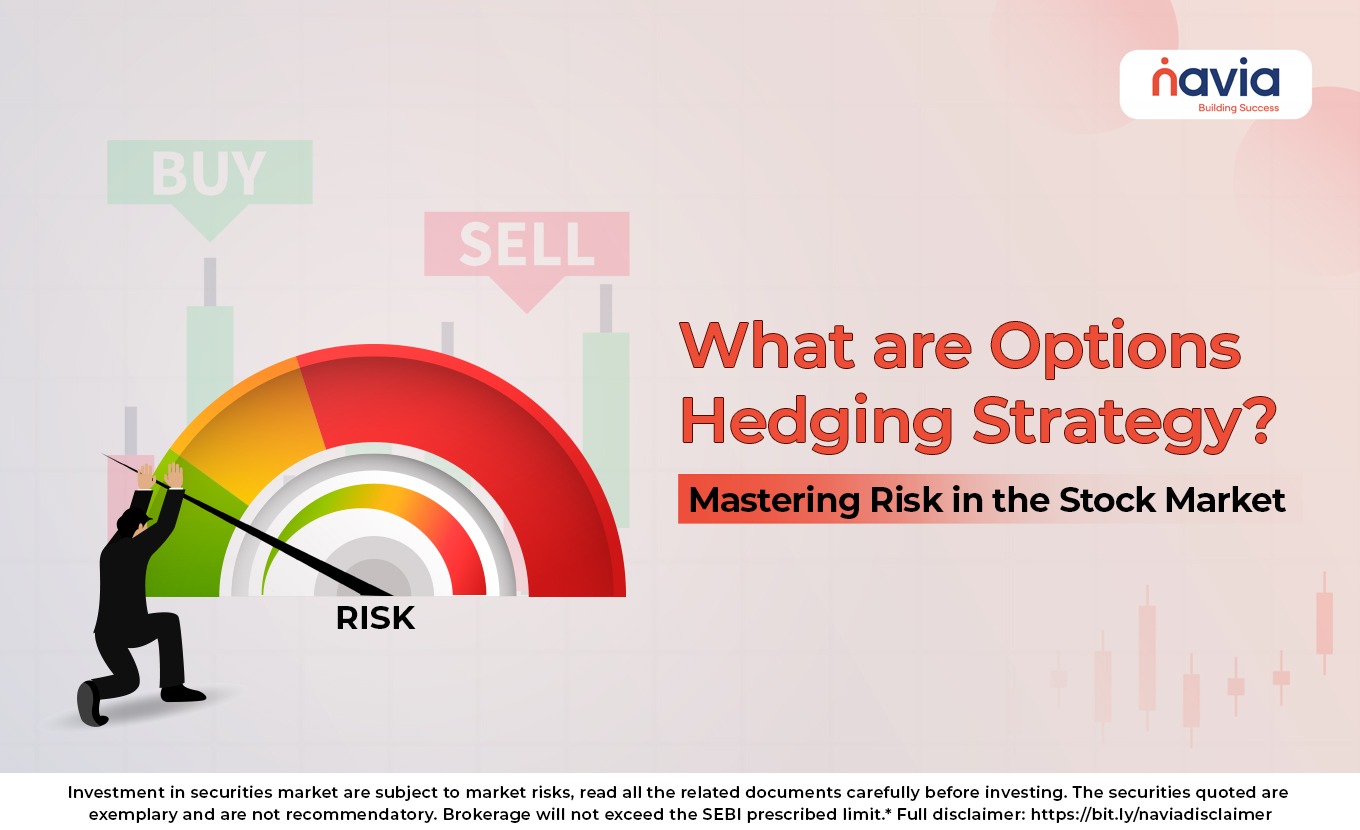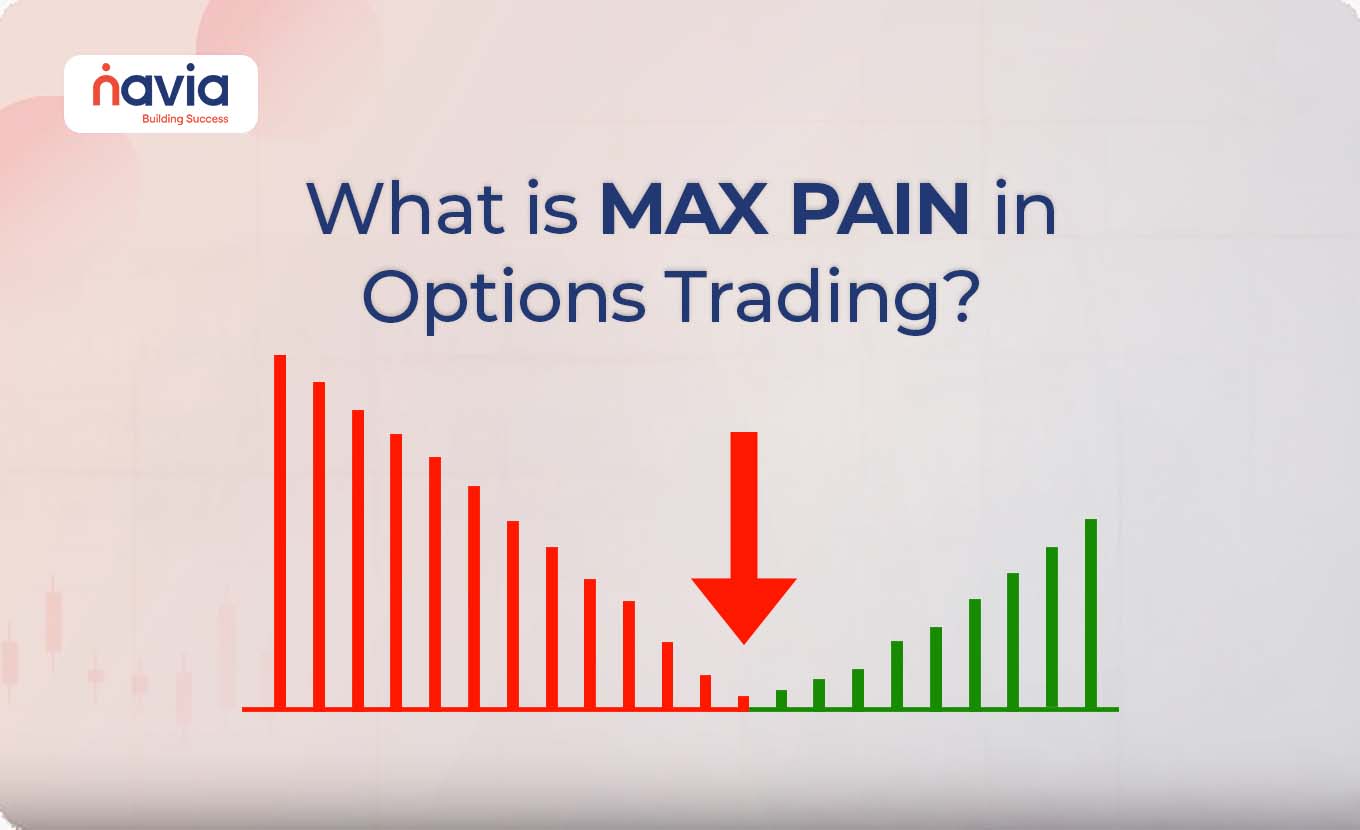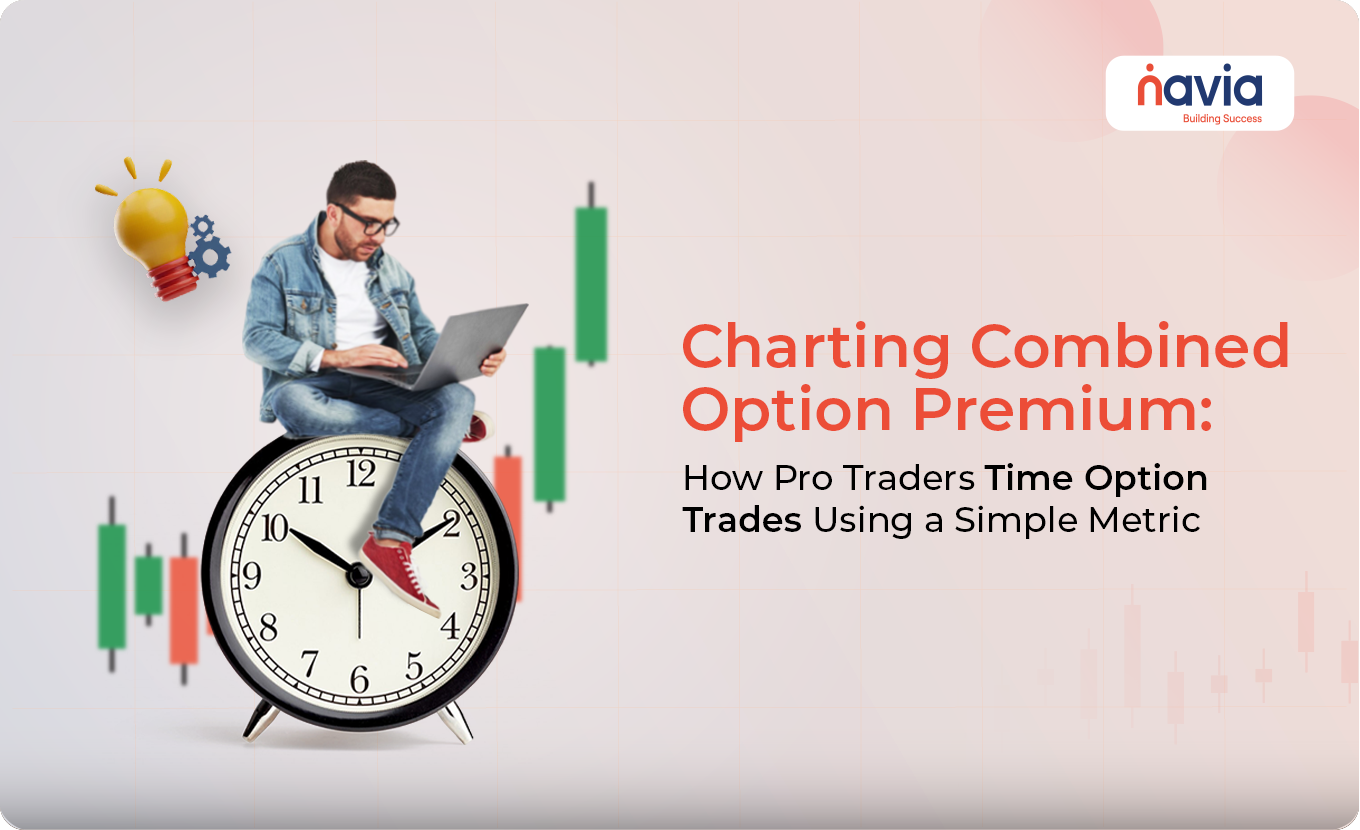When You Should Not Sell Options: A Guide for Beginner Options Traders

Options trading can be an attractive way to generate income, and selling options is one of the most popular strategies among traders. Selling options allows you to collect a premium upfront, which can be a great way to earn steady income in the market. However, selling options also comes with significant risks, especially if you don’t understand the situations when it’s not advisable to sell. In this blog, we’ll explore the scenarios where selling options might not be the best idea, providing easy-to-understand examples for beginner traders. We’ll also discuss how you can use the Navia Mobile App to improve your options trading using these principles.
What Does It Mean to Sell Options?
When you sell an option, you are essentially taking the opposite position of an option buyer. If you sell a call option, you are giving the buyer the right to purchase the underlying asset from you at a specified price (the strike price) before or on a specific date (the expiration date). Conversely, if you sell a put option, you are giving the buyer the right to sell the underlying asset to you at the strike price before the expiration date.
As the seller (or “writer”) of the option, you receive a premium from the buyer upfront. This premium is yours to keep, regardless of what happens to the price of the underlying asset. However, in exchange for this premium, you take on significant obligations. If the market moves against you, you could face substantial losses.
Common Mistakes When Selling Options
Selling options can be profitable, but it’s not without its pitfalls. Here are some common mistakes that beginner traders often make when selling options, along with examples to illustrate why these scenarios can be risky.
1. Selling Naked Options Without Adequate Capital
One of the riskiest strategies in options trading is selling “naked” options. A naked option is one where the seller does not own the underlying asset (for a call option) or does not have the cash or margin to cover the potential obligation (for a put option). This strategy can lead to unlimited losses if the market moves sharply against your position.
🔷 Example: Imagine you sell a naked call option on a stock trading at ₹1,000 with a strike price of ₹1,100, and you receive a premium of ₹20 per share. If the stock price shoots up to ₹1,300 before the option expires, you will be obligated to sell the stock at ₹1,100, even though it’s trading at ₹1,300. Since you don’t own the stock, you’ll have to buy it at ₹1,300 and sell it at ₹1,100, resulting in a loss of ₹200 per share, minus the ₹20 premium you received.
2. Selling Options During High Volatility
Implied volatility (IV) is a key factor in options pricing. When volatility is high, options premiums are elevated, which might seem attractive to sellers because of the higher income potential. However, selling options during periods of high volatility can be risky because the market is more likely to experience significant price swings, increasing the likelihood that the option will be exercised.
🔷 Example: Suppose you sell a put option on a stock trading at ₹500 during a period of high volatility, and you receive a premium of ₹30 per share. If the stock price drops sharply to ₹400 due to market turmoil, you will be obligated to buy the stock at ₹500, leading to a loss of ₹70 per share (₹100 loss on the stock price minus the ₹30 premium).
3. Ignoring Implied Volatility Crush After Earnings
Earnings announcements are often accompanied by a surge in implied volatility as traders anticipate significant price movements. After the earnings report is released, implied volatility typically drops sharply, a phenomenon known as “volatility crush.” If you sell options before an earnings announcement, you might think you’re taking advantage of high premiums, but if the stock doesn’t move as much as expected, the option’s value could plummet.
🔷 Example: You sell a call option on a stock trading at ₹1,000 just before its earnings announcement, and you receive a premium of ₹40 per share. After the earnings report, the stock price rises slightly to ₹1,020, but the implied volatility drops, causing the option premium to decrease sharply. The option might still be out of the money, but the drop in volatility could make it less profitable than expected.
4. Selling Deep Out-of-the-Money (OTM) Options
Selling deep out-of-the-money options might seem like a low-risk strategy because the strike price is far from the current market price. However, these options are often priced low for a reason: the market perceives little chance of them being exercised. The problem arises when an unexpected event causes the underlying asset’s price to move significantly, making the option profitable for the buyer and costly for you.
🔷 Example: You sell a deep out-of-the-money call option on a stock trading at ₹1,000 with a strike price of ₹1,200, and you receive a premium of ₹10 per share. A surprise announcement causes the stock to surge to ₹1,250, and the option is exercised. You’re now forced to sell the stock at ₹1,200, resulting in a loss of ₹50 per share, minus the ₹10 premium.
5. Not Understanding the Impact of Theta Decay
Theta represents the time decay of an option, which is the rate at which the option loses value as it approaches its expiration date. While Theta works in favor of the seller because it reduces the option’s value over time, it’s important to remember that this decay accelerates as the expiration date approaches. Selling options with short expiration dates might seem like a good way to capture quick profits, but the risk of sudden market movements increases as expiration nears.
🔷 Example: You sell a call option on a stock trading at ₹800 with a strike price of ₹850 and an expiration date in three days. You receive a premium of ₹5 per share. While Theta decay is working in your favor, the stock price unexpectedly jumps to ₹860 the day before expiration. The option is exercised, and you must sell the stock at ₹850, resulting in a loss of ₹10 per share, minus the ₹5 premium.
6. Selling Options Without Considering Delta
Delta measures the sensitivity of an option’s price to changes in the price of the underlying asset. Selling options with a high Delta means you’re taking on significant risk because the option’s price will move sharply with the underlying asset’s price. On the other hand, selling options with a low Delta might seem safer, but it also means you’ll receive a lower premium, making the trade potentially less profitable.
🔷 Example: You sell a call option on a stock trading at ₹600 with a Delta of 0.8, meaning the option’s price will increase by ₹0.80 for every ₹1 increase in the stock price. If the stock price rises to ₹650, the option’s price could increase significantly, leading to a substantial loss if the option is exercised.
7. Over-Leveraging
Options are inherently leveraged instruments, meaning that small changes in the underlying asset’s price can result in large changes in the option’s price. While leverage can magnify profits, it can also amplify losses. Over-leveraging occurs when you sell more options than your capital can comfortably cover, leading to potentially devastating losses.
🔷 Example: You sell 10 naked put options on a stock trading at ₹700, expecting the stock price to remain stable. However, the stock price drops to ₹600, and you’re obligated to buy 1,000 shares at ₹700, resulting in a loss of ₹100,000, minus any premiums received. If you don’t have sufficient capital to cover this loss, you could face a margin call or be forced to liquidate other positions.
How to Avoid These Common Mistakes
Understanding when not to sell options is essential for managing risk and ensuring that your trading strategy remains profitable. Here are some tips to help you avoid the common pitfalls of selling options:
1) Sell Covered Options: Instead of selling naked options, consider selling covered options, where you own the underlying asset (for a call option) or have enough cash to cover the obligation (for a put option). This reduces your risk significantly.
2) Monitor Volatility: Be cautious about selling options during periods of high implied volatility or before earnings announcements. High volatility increases the likelihood of significant price movements, which can lead to losses.
3) Choose Strike Prices Wisely: Avoid selling deep out-of-the-money options unless you’re fully aware of the risks. Choose strike prices that offer a balance between premium received and the likelihood of the option being exercised.
4) Understand Time Decay: Be mindful of Theta decay and avoid selling options with short expiration dates unless you’re prepared to manage the position actively.
5) Consider Delta: Pay attention to Delta when selling options. Options with high Delta pose more risk, while options with low Delta may offer lower premiums but less risk.
6) Manage Leverage: Avoid over-leveraging by selling more options than your capital can cover. Always ensure you have sufficient capital to manage potential losses.
How to Use Navia Mobile App for Better Option Trading
The Navia Mobile App is an excellent tool for traders looking to enhance their options trading strategies. Here’s how you can use the app to avoid common mistakes and improve your trading outcomes:
1) Real-Time Option Greeks: Use the Navia Mobile App to view real-time Option Greeks, such as Delta, Theta, and Vega, for the options you’re considering selling. This will help you assess the risk and potential reward of each trade.
2) Monitor Volatility: The app provides live market data, including implied volatility, allowing you to make informed decisions about when to sell options. Avoid selling during periods of high volatility to reduce the risk of adverse price movements.
3) Set Alerts: Set up price alerts in the Navia Mobile App to notify you of significant changes in the market. This will help you manage your positions more effectively and avoid unexpected losses.
4) Analyze Risk: The app’s Options Strategy analysis tools can help you evaluate the potential impact of different market scenarios on your options positions. Use these tools to ensure you’re not over-leveraging or taking on excessive risk.
5) Track Your Portfolio: The Navia Mobile App allows you to track your options portfolio in real-time, making it easy to monitor your positions and make adjustments as needed.
By leveraging the features of the Navia Mobile App, you can make more informed decisions, reduce your risk, and improve your overall options trading strategy.

Conclusion
Selling options can be a lucrative strategy, but it’s not without risks. By understanding when not to sell options, you can avoid common pitfalls that lead to losses and develop a more disciplined and profitable trading approach. Always consider factors such as volatility, time decay, and Delta before entering a trade, and avoid over-leveraging to protect your capital.
Using the Navia Mobile App can further enhance your trading by providing real-time data, risk analysis, and alerts that help you stay on top of your positions. By following the principles outlined in this blog and utilizing the tools available through Navia, you’ll be better equipped to navigate the complexities of options trading and achieve your financial goals. Happy trading!
We’d Love to Hear from you-
DISCLAIMER: Investments in the securities market are subject to market risks, read all the related documents carefully before investing. The securities quoted are exemplary and are not recommendatory. Brokerage will not exceed the SEBI prescribed limit.





